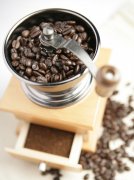How to choose and purchase automatic coffee machine digital display VS indicator

If you know the main difference between fully automatic, semi-automatic and manual, it is easy to buy a coffee maker. The difficulty is how you make decisions among so many fully automated machines. In theory, the basic functions of all full automata are the same, and the different price lies in their "additional functions".
You may find a series of feature lists on a machine. But if you are not an Espresso expert, you may only solve half of your problem. Knowing the role of each function makes you understand what is necessary and what is luxury.
First of all, we want to list what are the standard functions of full automata. All full automata can automatically grind beans and load coffee powder into the production assembly, in which the coffee powder is pressed and brewed. You can use the machine to choose the amount of coffee. The fully automatic coffee maker also provides hot water and steam. The water or steam used to make coffee is made from the water in the tank that comes with the machine and is heated to the appropriate temperature by a small boiler.
What we will discuss below is what we think of as "additional functions", such as some processes, settings or components are available on some fully automated machines and some are not.
Use the second kind of coffee
This feature is designed for users who like changes. The bean barn of the fully automatic machine is full of commonly used coffee beans. If you want to use other coffee beans (powder), you must remove the original beans from the coffee bin. This is troublesome because it is difficult to remove all the coffee beans, some of which are already in the grinder. With this function, you can grind the beans into powder and add them to a warehouse specially designed for the second kind of coffee. Usually the amount of powder used in a cup of Espresso is 6-9 grams. Most coffee machines with this function are only allowed to add 6-9 grams of coffee powder to make a cup of Espresso. If you like Double Espresso, you must make another cup after one cup is finished. Some machines use non-detachable components that can accept 5-16 grams of coffee powder, so your Double can be done in one step. It is important to keep in mind that the function of the second kind of coffee only accepts coffee powder, not any coffee beans.
Single or two heating systems
A fully automatic coffee machine usually takes 43 seconds to heat from the brewing temperature to the steam temperature, while two heating systems can actually eliminate the waiting time. Fully automatic general use of thermal resistance plate heating unit. When heated from the punching temperature to the steam temperature, a small amount of water passes through the heating plate, so it takes time in the conversion. The double heating system can make milk foam with steam while brewing coffee, and there is no need to pour the boiler to cool down (to the brewing temperature) after using the steam.
Digital display VS indicator
If you don't like flashing lights, the digital display function is designed for you. The digital display will tell you what the machine is ready to do, what it is doing, or what needs to be done. Like a combination indicator, the message will tell you when you are out of beans or need to add water. An LED may indicate more than one error message, and the digital display will tell you a special error message. For some machines, the digital display will tell you how much coffee is being made, the choice of program settings, and even the total number of cups of coffee made since its inception.
Program setting
Many automatic coffee machines have program setting functions, but the functions and forms of program settings vary from model to model. Here we list some of the features that are usually available for program settings.
Cup quantity control
Each automatic coffee machine can adjust the amount of coffee released, but not all machines can be controlled by program. With this function, you can set each coffee button so that it can release a certain amount of coffee. Some machines can also set the amount of hot water released.
Function of pre-grinding powder
This feature speeds up the time it takes you to make coffee. After making a cup of coffee, the bean grinder has begun to grind the coffee powder needed for the next cup and fill it into the production assembly to wait for the next cup to be made. When you press the key to make the next cup, you don't have to wait for the bean grinding process, and the coffee will be brewed immediately. The disadvantage of this function is that the ground coffee powder will lose its freshness if it is placed for too long.
Prefabricated function
When you enable this feature, the coffee powder is first soaked in a small amount of water and wait about 1 second before the official production begins. This function enables coffee powder to be better extracted. The prefabricated function can also be placed for uneven punching. When using this function, you will find that after the end of the grinding process, a few drops of coffee drip out, and after a pause, the coffee brewing begins.
Temperature control
The outlet temperature for making Espresso is usually set at about 85 ℃. When it reaches your coffee cup, the temperature drops to about 74 ℃. Preheat your coffee cup (or Espresso cup) to reduce cooling. But if you are not satisfied, you can set the coffee temperature yourself. In most coffee machines, when the temperature is set to "high", the coffee outlet temperature is around 77 ℃. As you can see from the above figures, the temperature of Espresso is much lower than that of drip coffee. Drip coffee is usually made at temperatures ranging from 90 ℃ to 96 ℃.
Regulation of coffee bean dosage
The amount of coffee beans used in each production can be adjusted, so that you can adjust the concentration of coffee according to different amount of water and different tastes. For a coffee machine with removable production components, the adjustment range of the amount of beans produced at one time is between 6 and 9 grams. Non-unloading production component coffee machine, according to the machine, the adjustment range is 5-16g. High dosage allows you to make a cup of Double Espresso at the touch of a button.
Removable and non-removable manufacturing components
The production component is a part of coffee brewing. The advantage of removable manufacturing components is that you can remove them for inspection and cleaning. You can remove it very easily without any tools. Production components can often be removed to rinse and clean coffee residue powder and coffee oil. On the other hand, the machine with non-detachable components does not need to be cleaned manually, and the machine will be washed automatically when it is turned on and off.
Coffee cup preheating plate
Usually, the fully automatic coffee machine has a coffee cup preheating plate, but it is not standard. Serving coffee in a cold cup is bound to damage the taste of the coffee, and the preheated cup will only make you more satisfied with your coffee. Most hot cups are active and have independent heating systems. And the passive preheating plate is the use of coffee preheating, so the effect is slower.
Adjustment of the thickness of ground bean powder
Most fully automatic coffee machines allow you to adjust the bean grinder. If your coffee taste is too weak or too strong (bitter), you can adjust the setting of the bean grinder. Grinding beans finely can make the coffee stronger, but too fine can make the coffee bitter or slow the coffee to flow out. On the contrary, if the ground beans are thicker, it will make the coffee lighter, lacking that kind of exhilarating feeling.
Important Notice :
前街咖啡 FrontStreet Coffee has moved to new addredd:
FrontStreet Coffee Address: 315,Donghua East Road,GuangZhou
Tel:020 38364473
- Prev

Selection and purchase of electric coffee pot and matters needing attention pay attention to waterproof
Take a closer look at the coffee pot electric coffee maker family was originally three brothers: percolation type, drip type and vacuum type. However, the percolation coffee pot is the early product of the electric coffee pot, although the price is low, but it is not convenient to use and the reliability is poor; the coffee made by the vacuum electric coffee pot has a strong flavor, but its structure is complex and prone to various failures. Survival of the fittest is now all that's left in the market.
- Next

Espresso Coffee Machine Terminology
Espresso Terminology When you read our History chapter (forthcoming), you will find that you are still facing a very new technology. You'll also get the sense that the technology used in home espresso models is still a decade or more behind that used in commercial models. But at the same time, this phenomenon is changing. For this reason, I also condemn (or thank) the Internet. Over the past few years, we have also
Related
- What is the Philharmonic pressure? How to use Philharmonic pressure to make delicious coffee
- Why does a hand grinder have more fine powder than an electric grinder?
- In addition to the hot mom, what is the difference between the versions of EK43 | ditting and Mahdi ek43?
- What kind of equipment do you need to make coffee by hand? Introduction to novice starter cooking equipment tools
- Espresso needs to be ground how thick and thin scale entry Italian Coffee Machine Bean Grinder investigation and Grinding course
- How much does it cost to open a small private cafe? How much does it cost to learn coffee? How to operate it?
- The difference between the flavor characteristics of hand-brewed coffee and coffee maker is hand-brewed coffee really better than coffee maker? Can I use a coffee machine to make coffee beans by hand?
- The difference between 01 and 02 of hario v60 filter cup what is the difference between 01 and 02 filter cup opening and cooking flavor
- What's the difference between the smart cup and the French kettle? Which is better, the French kettle or the Smart Cup?
- What's the difference between a smart cup and a V60 filter cup? The difference between the taste of smart cup and hand-brewed coffee

